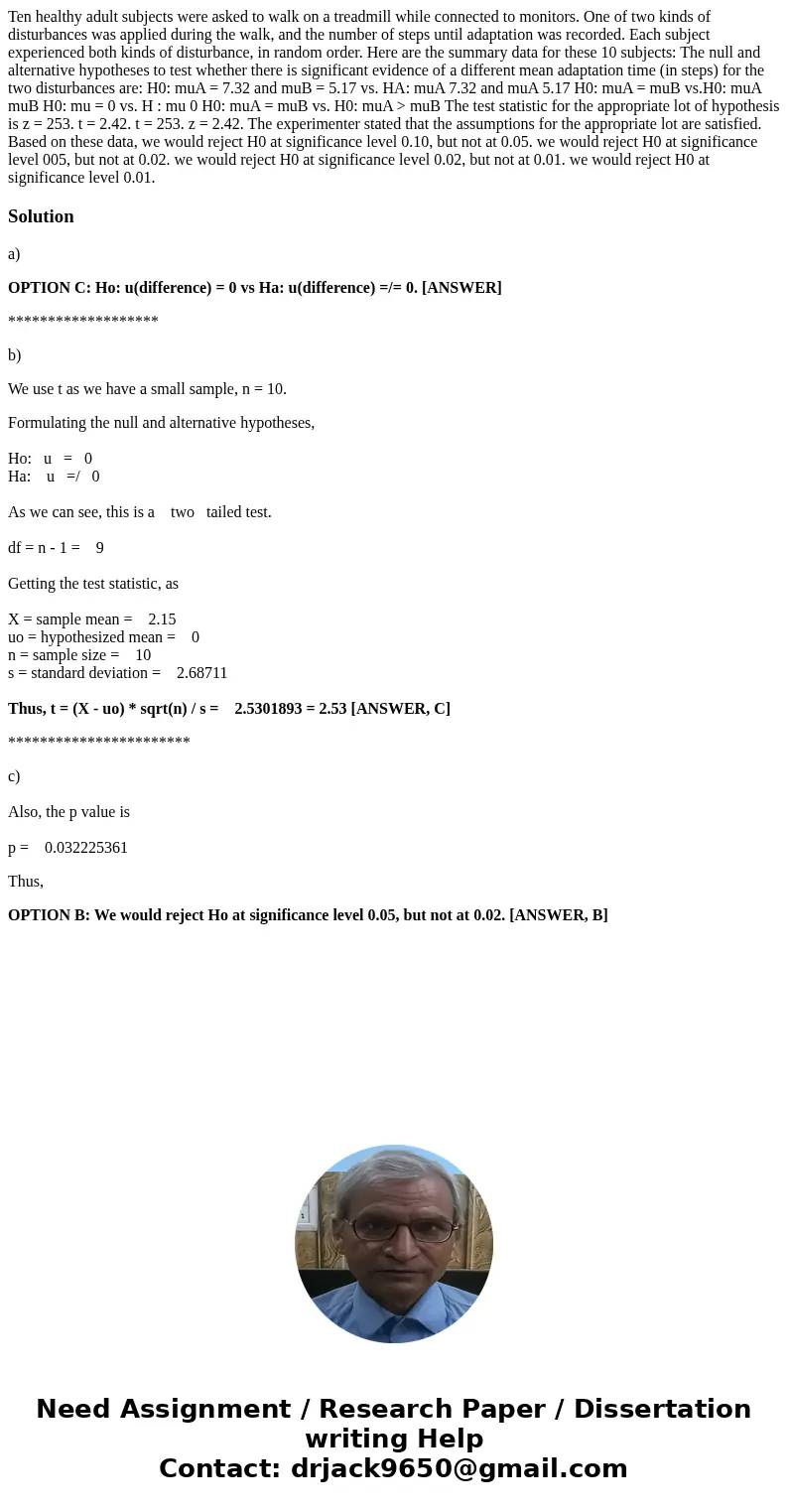Ten healthy adult subjects were asked to walk on a treadmill
Solution
a)
OPTION C: Ho: u(difference) = 0 vs Ha: u(difference) =/= 0. [ANSWER]
*******************
b)
We use t as we have a small sample, n = 10.
Formulating the null and alternative hypotheses,
Ho: u = 0
Ha: u =/ 0
As we can see, this is a two tailed test.
df = n - 1 = 9
Getting the test statistic, as
X = sample mean = 2.15
uo = hypothesized mean = 0
n = sample size = 10
s = standard deviation = 2.68711
Thus, t = (X - uo) * sqrt(n) / s = 2.5301893 = 2.53 [ANSWER, C]
***********************
c)
Also, the p value is
p = 0.032225361
Thus,
OPTION B: We would reject Ho at significance level 0.05, but not at 0.02. [ANSWER, B]

 Homework Sourse
Homework Sourse